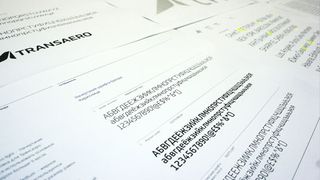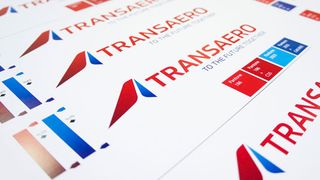4 ways typography can boost your branding
StartJG's creative director Chris Bennett explains why typography is so important to branding design, and what functions it can perform.
To the untrained eye, developments like Facebook's new mobile-friendly typeface bear little significance. But to creatives and designers, typography has never played a more crucial role in the communication of a brand as it does today.
Here are four things that typography can – when done well – achieve, that make it such an important aspect of the design process.
01. It sets the mood
It may be the image that grabs you initially. But, remember, people are both consciously and subconsciously influenced by the way in which a brand uses type, so it must encompass everything about who that brand is.
It's the subtle reasoning behind a font choice that play a big part. A typeface can create emotion (happy or sad?), enhance a theme (past or present?), spark interest (shout or whisper?), add personality (silly or serious?) and even convey trust – all of which is crucial to the launch of a successful project.

Getting it right is the difference between having an audience engage with your message, or completely miss what's being said.
02. It works silently
Good typography should go unnoticed. Not seeing typography means it makes sense within its creative surroundings. Consumers today are exposed to so much exceptional creative work that they have become desensitised to good typography (which is a good thing!).
Good typography holds their hand; it guides them along, tells them what's important, helps them organise information, focuses them on the key points, tells a little more of the story. Bad typography screams at you. And it will be defunct from achieving any of the above.
Get the Creative Bloq Newsletter
Daily design news, reviews, how-tos and more, as picked by the editors.
03. It conveys meaning
As with clothing fashions, typography styles constantly change. The choice of font used, however, should never be influenced by what's on trend or popular within the design industry. Whichever font you choose has to have creative and commercial meaning; reasoning, purpose.
Here's an example. We recently created the new look and feel for Russia's most iconic airline, Transaero. This pioneering carrier stands for the future of travel, so our font needed to reflect that.

As part of the new visual identity, we worked with independent font foundry Dalton Maag to craft a totally bespoke typeface – taking a series of fonts to the next level of evolution. The typeface encapsulated the forward-facing excitement of the brand, more so than what images could have achieved alone.
04. It changes perceptions
The typographic choices we make can have a serious effect on how people perceive a brand. The way people consume media has dramatically changed with new technology, meaning more and more content is consumed via screens and responsive devices. For this alone, consideration on how typography looks and feels on every consumer platform has to be given.
Typography is just as important as communicating the brand's uniqueness through the use of colour, imagery or photography. But have fun with it, too. When choosing fonts, don't be afraid to work a typeface in a new way, just make sure it's relevant to the overall message you want to communicate.
Words: Chris Bennett
Chris Bennett is a multi-skilled creative director with 15 years' experience at StartJG. He runs a team delivering brand expression across the agency's cross-channel disciplines. Past clients include Virgin, Adidas and Barclays.
Like this? Read these...
- Top-quality typography tutorials
- Free graphic design software available to you right now!
- Download the best free fonts

Thank you for reading 5 articles this month* Join now for unlimited access
Enjoy your first month for just £1 / $1 / €1
*Read 5 free articles per month without a subscription

Join now for unlimited access
Try first month for just £1 / $1 / €1
The Creative Bloq team is made up of a group of design fans, and has changed and evolved since Creative Bloq began back in 2012. The current website team consists of eight full-time members of staff: Editor Georgia Coggan, Deputy Editor Rosie Hilder, Ecommerce Editor Beren Neale, Senior News Editor Daniel Piper, Editor, Digital Art and 3D Ian Dean, Tech Reviews Editor Erlingur Einarsson, Ecommerce Writer Beth Nicholls and Staff Writer Natalie Fear, as well as a roster of freelancers from around the world. The ImagineFX magazine team also pitch in, ensuring that content from leading digital art publication ImagineFX is represented on Creative Bloq.
